Evangelos E. Papalexakis
Deepfake Representation with Multilinear Regression
Aug 15, 2021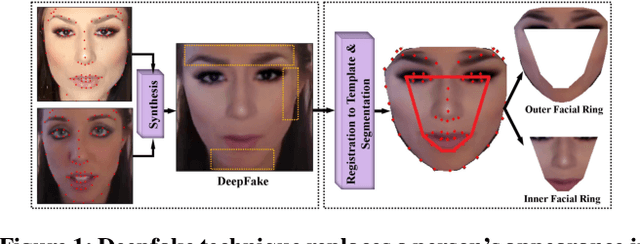
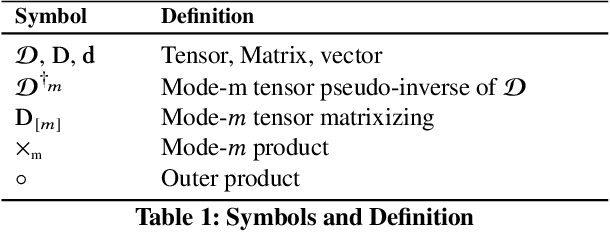
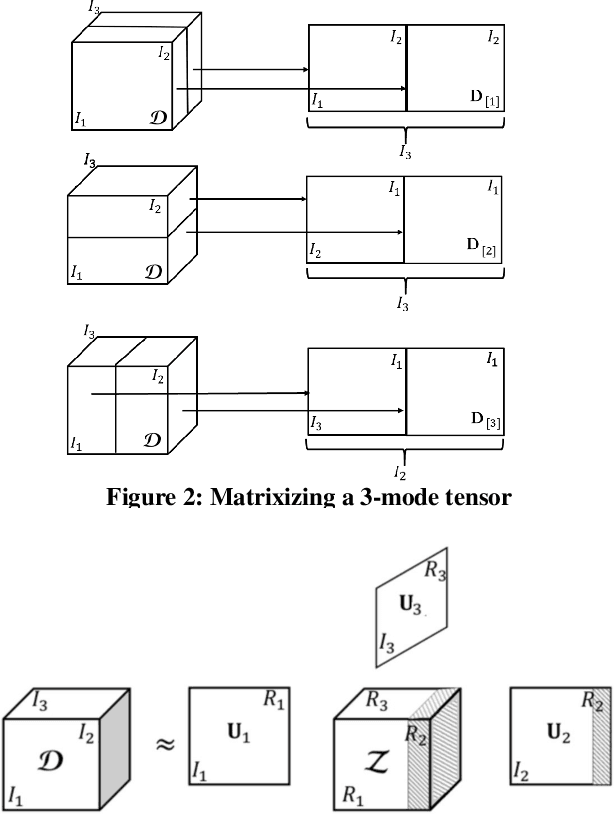
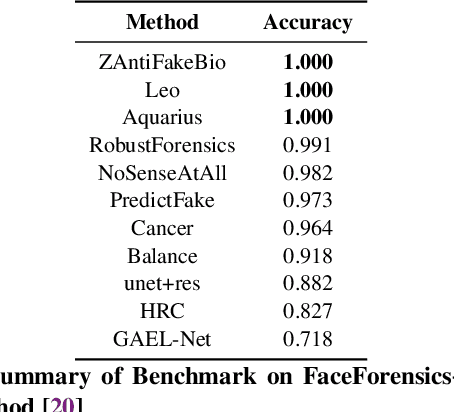
Abstract:Generative neural network architectures such as GANs, may be used to generate synthetic instances to compensate for the lack of real data. However, they may be employed to create media that may cause social, political or economical upheaval. One emerging media is "Deepfake".Techniques that can discriminate between such media is indispensable. In this paper, we propose a modified multilinear (tensor) method, a combination of linear and multilinear regressions for representing fake and real data. We test our approach by representing Deepfakes with our modified multilinear (tensor) approach and perform SVM classification with encouraging results.
Subspace Clustering Based Analysis of Neural Networks
Jul 02, 2021



Abstract:Tools to analyze the latent space of deep neural networks provide a step towards better understanding them. In this work, we motivate sparse subspace clustering (SSC) with an aim to learn affinity graphs from the latent structure of a given neural network layer trained over a set of inputs. We then use tools from Community Detection to quantify structures present in the input. These experiments reveal that as we go deeper in a network, inputs tend to have an increasing affinity to other inputs of the same class. Subsequently, we utilise matrix similarity measures to perform layer-wise comparisons between affinity graphs. In doing so we first demonstrate that when comparing a given layer currently under training to its final state, the shallower the layer of the network, the quicker it is to converge than the deeper layers. When performing a pairwise analysis of the entire network architecture, we observe that, as the network increases in size, it reorganises from a state where each layer is moderately similar to its neighbours, to a state where layers within a block have high similarity than to layers in other blocks. Finally, we analyze the learned affinity graphs of the final convolutional layer of the network and demonstrate how an input's local neighbourhood affects its classification by the network.
KNH: Multi-View Modeling with K-Nearest Hyperplanes Graph for Misinformation Detection
Feb 15, 2021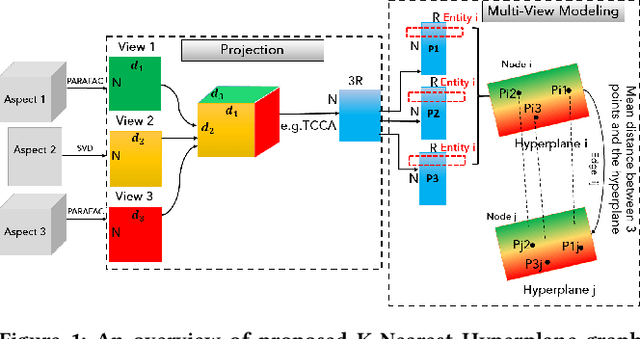
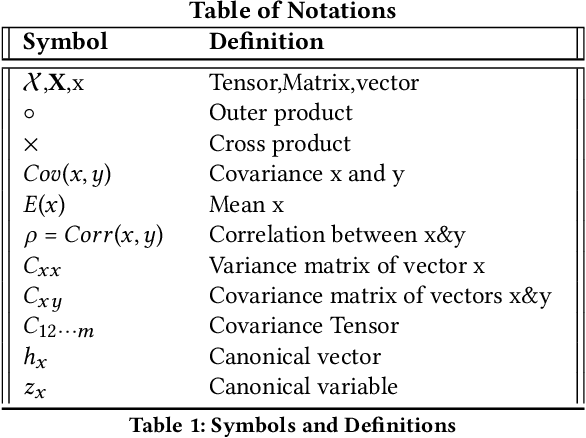
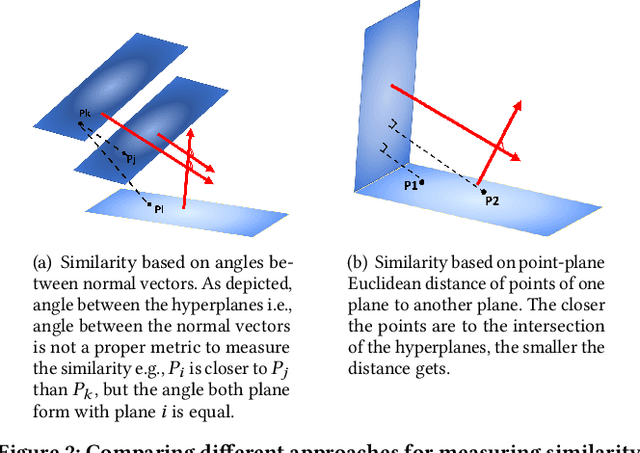

Abstract:Graphs are one of the most efficacious structures for representing datapoints and their relations, and they have been largely exploited for different applications. Previously, the higher-order relations between the nodes have been modeled by a generalization of graphs known as hypergraphs. In hypergraphs, the edges are defined by a set of nodes i.e., hyperedges to demonstrate the higher order relationships between the data. However, there is no explicit higher-order generalization for nodes themselves. In this work, we introduce a novel generalization of graphs i.e., K-Nearest Hyperplanes graph (KNH) where the nodes are defined by higher order Euclidean subspaces for multi-view modeling of the nodes. In fact, in KNH, nodes are hyperplanes or more precisely m-flats instead of datapoints. We experimentally evaluate the KNH graph on two multi-aspect datasets for misinformation detection. The experimental results suggest that multi-view modeling of articles using KNH graph outperforms the classic KNN graph in terms of classification performance.
Identifying Misinformation from Website Screenshots
Feb 15, 2021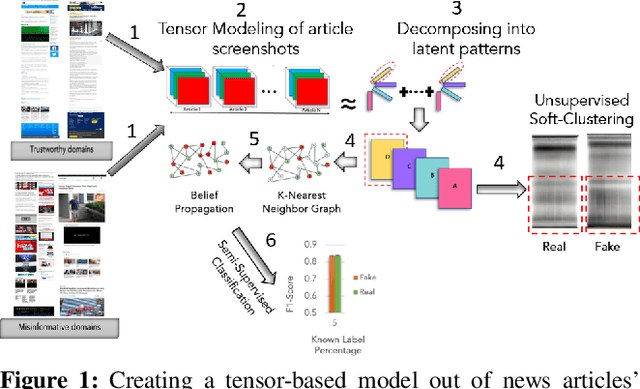

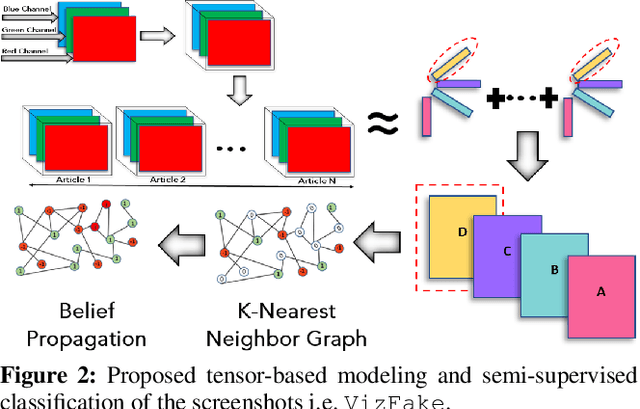
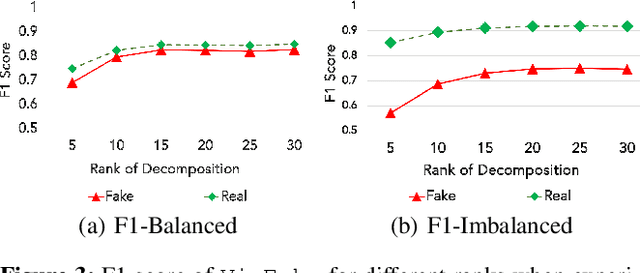
Abstract:Can the look and the feel of a website give information about the trustworthiness of an article? In this paper, we propose to use a promising, yet neglected aspect in detecting the misinformativeness: the overall look of the domain webpage. To capture this overall look, we take screenshots of news articles served by either misinformative or trustworthy web domains and leverage a tensor decomposition based semi-supervised classification technique. The proposed approach i.e., VizFake is insensitive to a number of image transformations such as converting the image to grayscale, vectorizing the image and losing some parts of the screenshots. VizFake leverages a very small amount of known labels, mirroring realistic and practical scenarios, where labels (especially for known misinformative articles), are scarce and quickly become dated. The F1 score of VizFake on a dataset of 50k screenshots of news articles spanning more than 500 domains is roughly 85% using only 5% of ground truth labels. Furthermore, tensor representations of VizFake, obtained in an unsupervised manner, allow for exploratory analysis of the data that provides valuable insights into the problem. Finally, we compare VizFake with deep transfer learning, since it is a very popular black-box approach for image classification and also well-known text text-based methods. VizFake achieves competitive accuracy with deep transfer learning models while being two orders of magnitude faster and not requiring laborious hyper-parameter tuning.
Analyzing Representations inside Convolutional Neural Networks
Dec 23, 2020
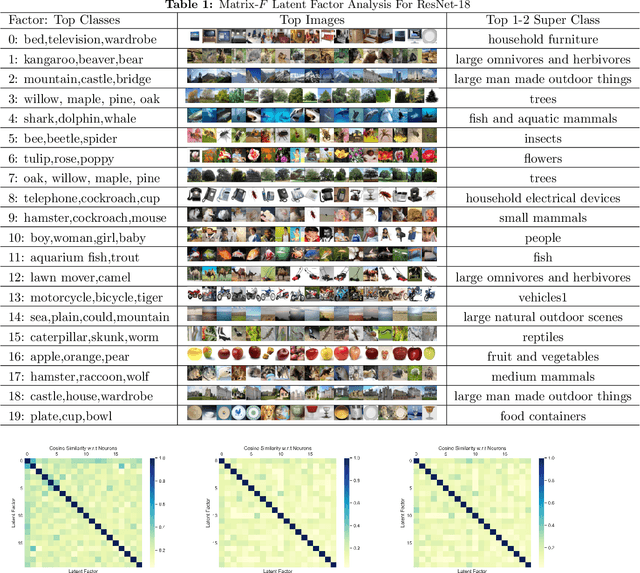
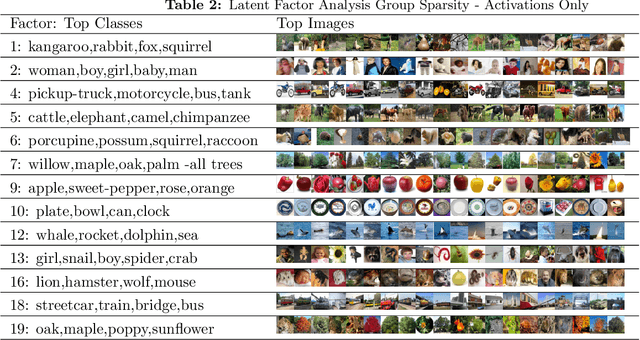

Abstract:How can we discover and succinctly summarize the concepts that a neural network has learned? Such a task is of great importance in applications of networks in areas of inference that involve classification, like medical diagnosis based on fMRI/x-ray etc. In this work, we propose a framework to categorize the concepts a network learns based on the way it clusters a set of input examples, clusters neurons based on the examples they activate for, and input features all in the same latent space. This framework is unsupervised and can work without any labels for input features, it only needs access to internal activations of the network for each input example, thereby making it widely applicable. We extensively evaluate the proposed method and demonstrate that it produces human-understandable and coherent concepts that a ResNet-18 has learned on the CIFAR-100 dataset.
Ensemble Node Embeddings using Tensor Decomposition: A Case-Study on DeepWalk
Aug 17, 2020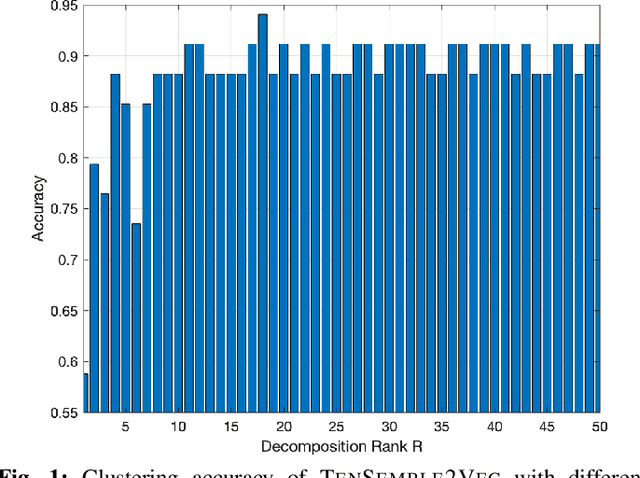
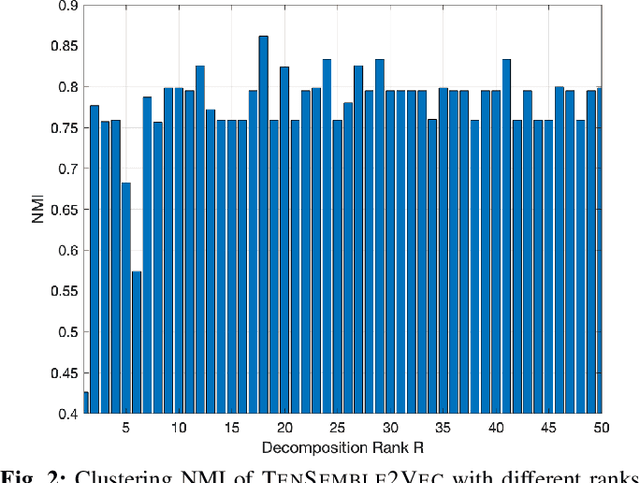
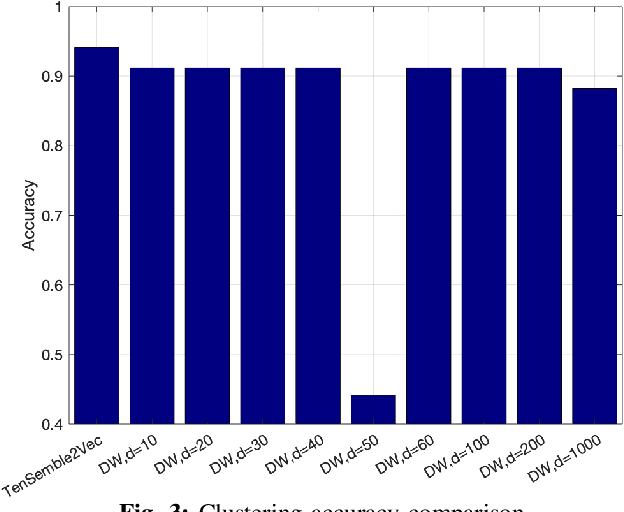
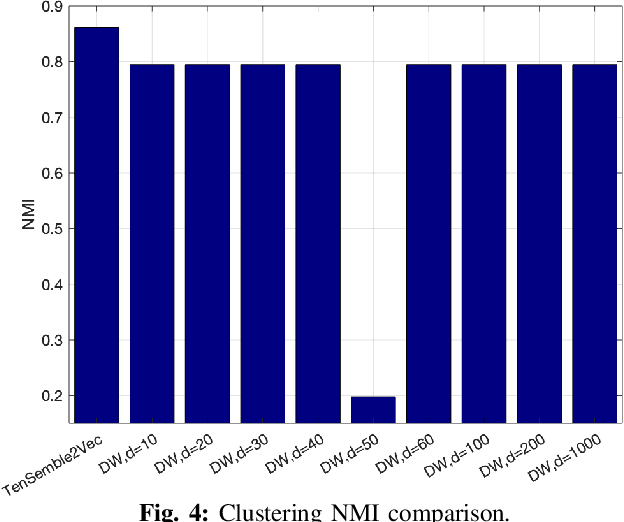
Abstract:Node embeddings have been attracting increasing attention during the past years. In this context, we propose a new ensemble node embedding approach, called TenSemble2Vec, by first generating multiple embeddings using the existing techniques and taking them as multiview data input of the state-of-art tensor decomposition model namely PARAFAC2 to learn the shared lower-dimensional representations of the nodes. Contrary to other embedding methods, our TenSemble2Vec takes advantage of the complementary information from different methods or the same method with different hyper-parameters, which bypasses the challenge of choosing models. Extensive tests using real-world data validates the efficiency of the proposed method.
HiJoD: Semi-Supervised Multi-aspect Detection of Misinformation using Hierarchical Joint Decomposition
May 08, 2020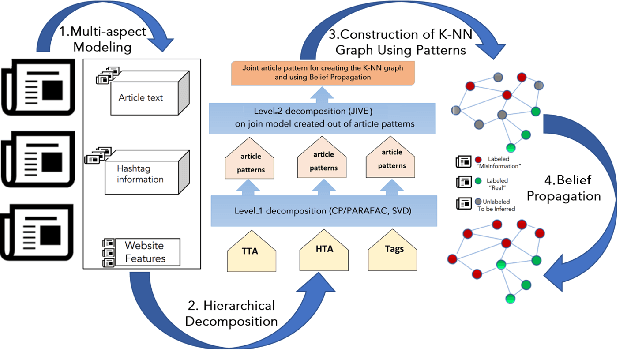

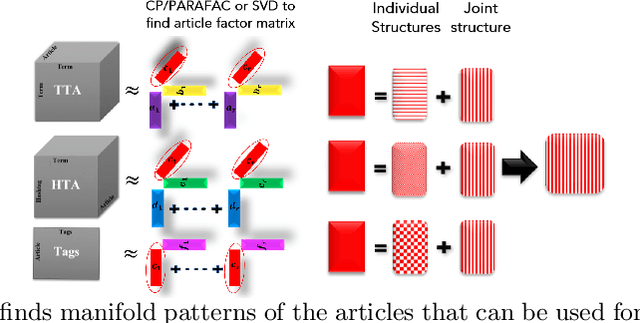

Abstract:Distinguishing between misinformation and real information is one of the most challenging problems in today's interconnected world. The vast majority of the state-of-the-art in detecting misinformation is fully supervised, requiring a large number of high-quality human annotations. However, the availability of such annotations cannot be taken for granted, since it is very costly, time-consuming, and challenging to do so in a way that keeps up with the proliferation of misinformation. In this work, we are interested in exploring scenarios where the number of annotations is limited. In such scenarios, we investigate how tapping on a diverse number of resources that characterize a news article, henceforth referred to as "aspects" can compensate for the lack of labels. In particular, our contributions in this paper are twofold: 1) We propose the use of three different aspects: article content, context of social sharing behaviors, and host website/domain features, and 2) We introduce a principled tensor based embedding framework that combines all those aspects effectively. We propose HiJoD a 2-level decomposition pipeline which not only outperforms state-of-the-art methods with F1-scores of 74% and 81% on Twitter and Politifact datasets respectively but also is an order of magnitude faster than similar ensemble approaches.
TensorShield: Tensor-based Defense Against Adversarial Attacks on Images
Feb 18, 2020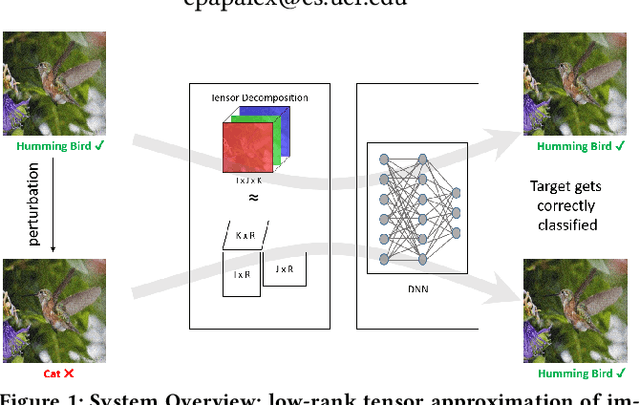
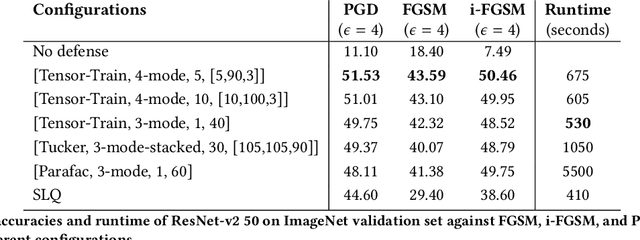

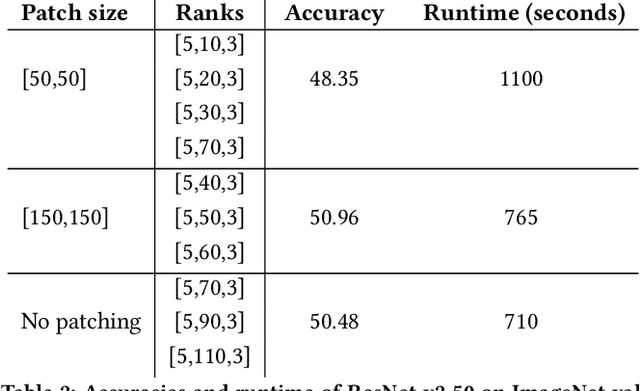
Abstract:Recent studies have demonstrated that machine learning approaches like deep neural networks (DNNs) are easily fooled by adversarial attacks. Subtle and imperceptible perturbations of the data are able to change the result of deep neural networks. Leveraging vulnerable machine learning methods raises many concerns especially in domains where security is an important factor. Therefore, it is crucial to design defense mechanisms against adversarial attacks. For the task of image classification, unnoticeable perturbations mostly occur in the high-frequency spectrum of the image. In this paper, we utilize tensor decomposition techniques as a preprocessing step to find a low-rank approximation of images which can significantly discard high-frequency perturbations. Recently a defense framework called Shield could "vaccinate" Convolutional Neural Networks (CNN) against adversarial examples by performing random-quality JPEG compressions on local patches of images on the ImageNet dataset. Our tensor-based defense mechanism outperforms the SLQ method from Shield by 14% against FastGradient Descent (FGSM) adversarial attacks, while maintaining comparable speed.
REST: A thread embedding approach for identifying and classifying user-specified information in security forums
Jan 08, 2020

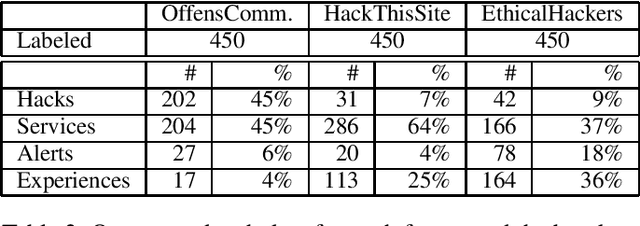

Abstract:How can we extract useful information from a security forum? We focus on identifying threads of interest to a security professional: (a) alerts of worrisome events, such as attacks, (b) offering of malicious services and products, (c) hacking information to perform malicious acts, and (d) useful security-related experiences. The analysis of security forums is in its infancy despite several promising recent works. Novel approaches are needed to address the challenges in this domain: (a) the difficulty in specifying the "topics" of interest efficiently, and (b) the unstructured and informal nature of the text. We propose, REST, a systematic methodology to: (a) identify threads of interest based on a, possibly incomplete, bag of words, and (b) classify them into one of the four classes above. The key novelty of the work is a multi-step weighted embedding approach: we project words, threads and classes in appropriate embedding spaces and establish relevance and similarity there. We evaluate our method with real data from three security forums with a total of 164k posts and 21K threads. First, REST robustness to initial keyword selection can extend the user-provided keyword set and thus, it can recover from missing keywords. Second, REST categorizes the threads into the classes of interest with superior accuracy compared to five other methods: REST exhibits an accuracy between 63.3-76.9%. We see our approach as a first step for harnessing the wealth of information of online forums in a user-friendly way, since the user can loosely specify her keywords of interest.
Adaptive Granularity in Tensors: A Quest for Interpretable Structure
Dec 19, 2019

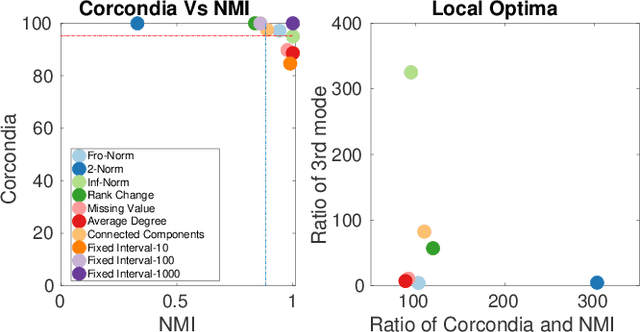
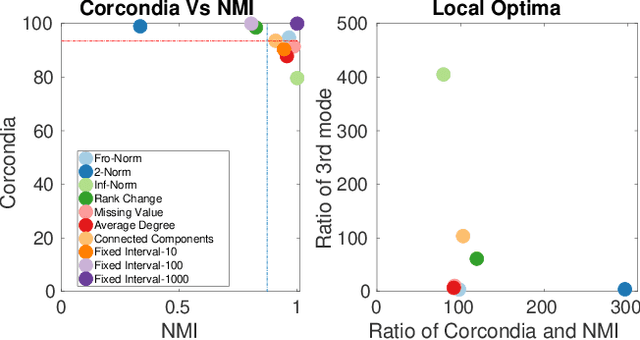
Abstract:Data collected at very frequent intervals is usually extremely sparse and has no structure that is exploitable by modern tensor decomposition algorithms. Thus the utility of such tensors is low, in terms of the amount of interpretable and exploitable structure that one can extract from them. In this paper, we introduce the problem of finding a tensor of adaptive aggregated granularity that can be decomposed to reveal meaningful latent concepts (structures) from datasets that, in their original form, are not amenable to tensor analysis. Such datasets fall under the broad category of sparse point processes that evolve over space and/or time. To the best of our knowledge, this is the first work that explores adaptive granularity aggregation in tensors. Furthermore, we formally define the problem and discuss what different definitions of "good structure" can be in practice, and show that optimal solution is of prohibitive combinatorial complexity. Subsequently, we propose an efficient and effective greedy algorithm which follows a number of intuitive decision criteria that locally maximize the "goodness of structure", resulting in high-quality tensors. We evaluate our method on both semi-synthetic data where ground truth is known and real datasets for which we do not have any ground truth. In both cases, our proposed method constructs tensors that have very high structure quality. Finally, our proposed method is able to discover different natural resolutions of a multi-aspect dataset, which can lead to multi-resolution analysis.
 Add to Chrome
Add to Chrome Add to Firefox
Add to Firefox Add to Edge
Add to Edge